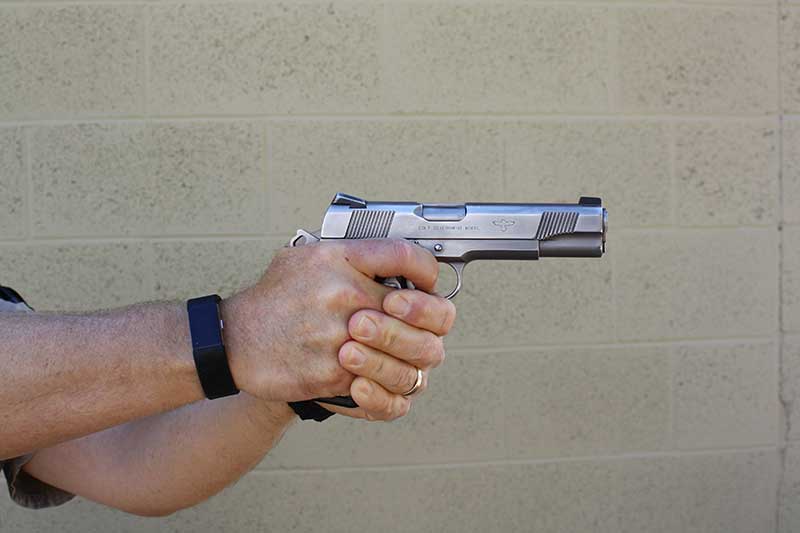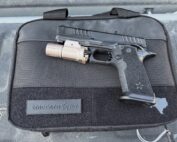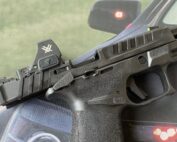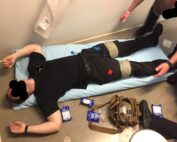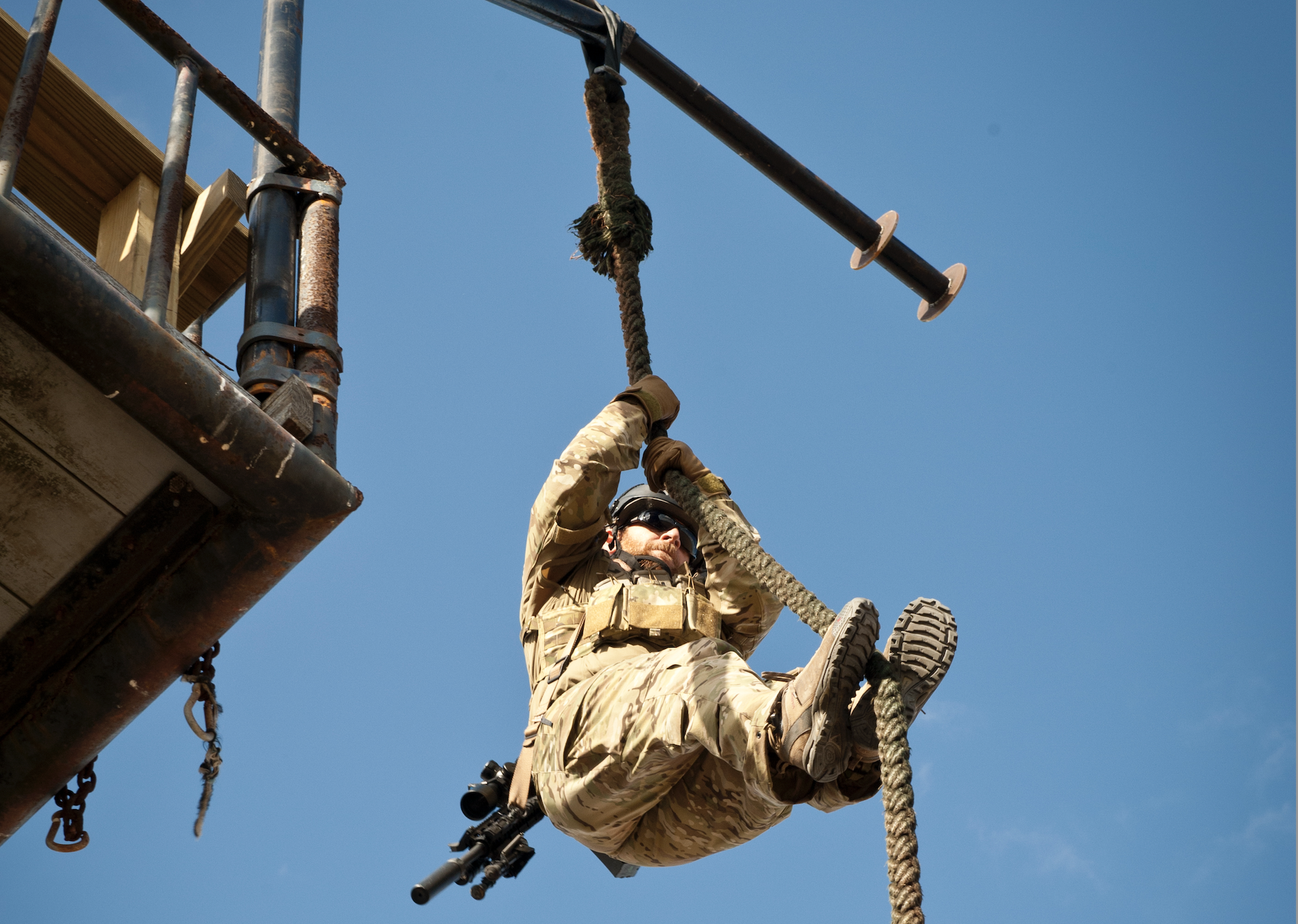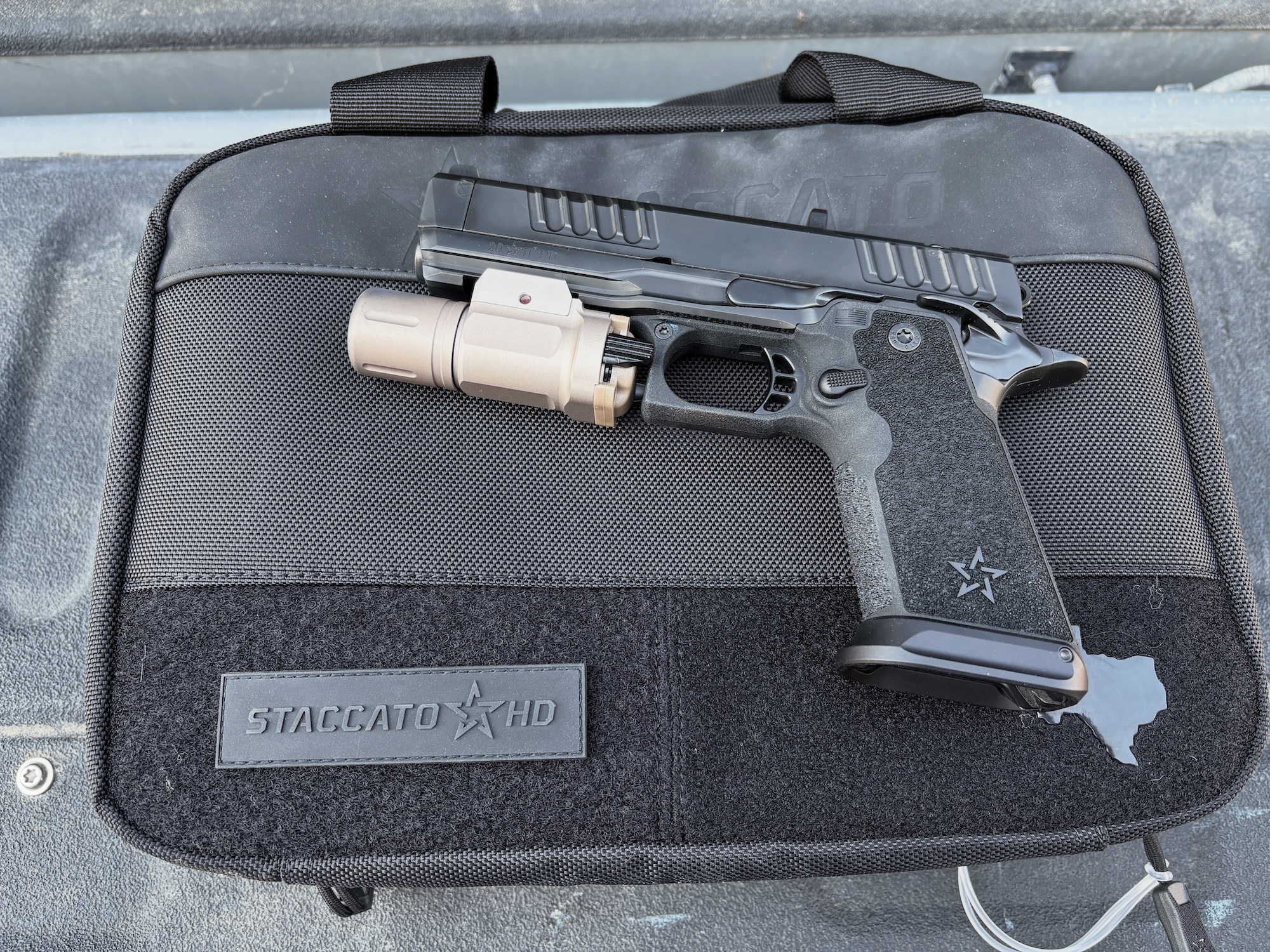
AC-03-15-22-TRIGGER_IMG_1576-800
Rule #3 – KEEP YOUR FINGER OFF THE TRIGGER UNTIL YOUR SIGHTS ARE ON TARGET.
The bottom line is that you do not ever want a negligent discharge with a firearm in your control. I think we can all agree with that. Then, the question is, why are we telling ourselves and our students to keep the trigger finger up off the trigger (or, more appropriately, on the frame, receiver)? There are a few reasons.
Making a firearm with a heavier trigger pull is not the answer; it does not make the gun safer. All that a heavier trigger pull does is make it harder for you to shoot the gun accurately. In one study, adult females have hand strength exceeding 46 pounds of pressure, while adult males can generate over 88 pounds. Those numbers are well beyond reasonable trigger weights.
You can have an involuntary contraction of your hand for several reasons. Regardless of the reason, that contraction of your hand and fingers can lead to a negligent discharge. The likelihood of this happening increases as your level of stress increases during an event.
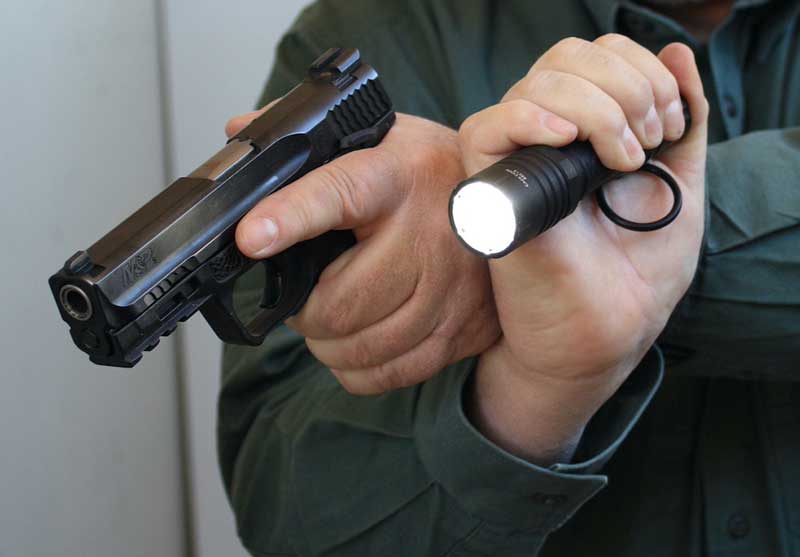
Muzzle’s depressed and the trigger finger is on the frame/slide interface. Even when the shooter manipulates the light, he can’t initiate an unintentional trigger press from here.

The shooter is still on target and engaging it, the trigger finger stay on the trigger until they are no longer shooting.
Research into negligent discharges has found the most frequent causes are:
Startle Response: This can happen anytime something unexpected startles you. The body’s response is to tense up. If this happens when you have a loaded firearm in your hands, and your finger is on the trigger, you risk a negligent discharge.
Inter-limb Interaction: If one hand is grabbing, squeezing, or turning something through the parasympathetic nervous system, then your other hand will want to mirror that. If that hand holds a firearm with your finger on the trigger, it may generate enough force to depress the trigger.
Loss of Balance: This occurs when you have a firearm in your hand and something disturbs your balance. The brain then reacts to correct the loss of balance by tensing up.
Professor Roger Enoka – University of Colorado at Boulder, who is mentioned above, has done excellent research on issues relating to our hands and negligent discharges,
What is the best way for you to prevent a negligent or accidental firearm discharge? Consciously train to keep your index finger off the trigger and on the frame. It stays there until you have decided to shoot, and your sights are on the target. This is essential to safe gun handling.
If you are concerned about a significant time delay during a defensive encounter, don’t be. Several instructors have put their students on the clock to test the principle. I will discuss research into other time and decision-making issues in future articles.

You don’t have to “see” the sights on target to know they are there. The body index of a retention position will get you there.
TRAGIC EXAMPLES
Two different law enforcement shootings should drive this point home. In the first, during a search warrant service, an officer was holding his M4 carbine in one hand, with the safety off, while he tried to handcuff someone who was not the suspect with the other hand. The officer had a negligent discharge, which struck that individual in the head, killing him.
In the second, two NYPD officers were patrolling an apartment stairwell in November 2014. Approaching a door out of the stairwell, one officer had his pistol with an 11.5 lb. trigger in his left hand. He tried turning the doorknob with his right hand, but the door seemed stuck. As he began to drive his shoulder into the door, he heard something to his left, down the stairwell, that “startled” him. As he turned to the left to look, “and the gun just went off after my body tensed up.” That round struck a man two floors down and killed him. Initially, prosecutors charged the officer with Manslaughter and Criminally Negligent Homicide. Later, a jury convicted him of Manslaughter and Official Misconduct.
REFERENCES
https://www.livestrong.com/article/468905-hand-grip-strength-test/;
Roger Enoka, Involuntary Muscle Contractions, 2004;
Stamps v. Town of Framingham, No. 15-1141 (1st Cir. 2016);
Mas Ayoob, American Handgunner magazine, 2018;


 (No Ratings Yet)
(No Ratings Yet)